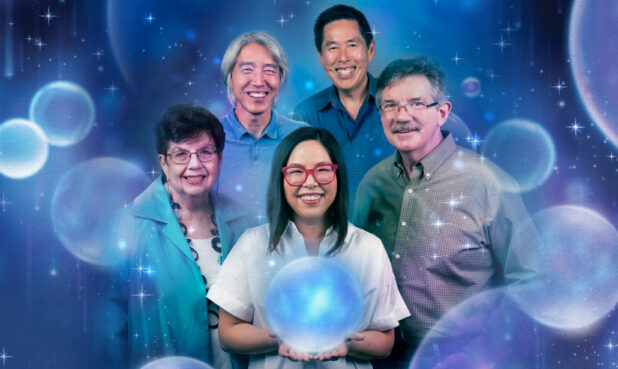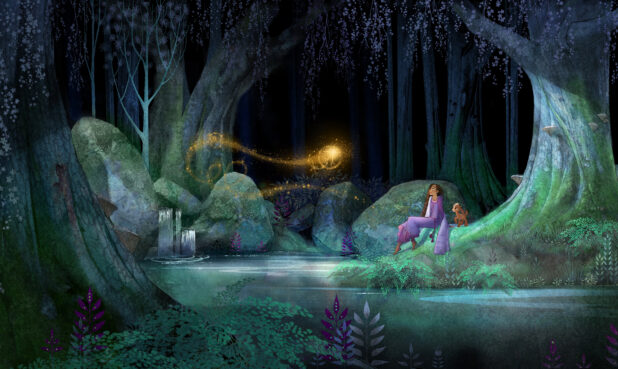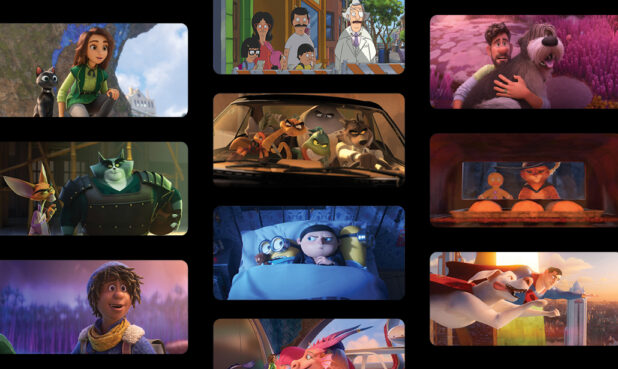When The Lion King opened in theaters 30 years ago, it revolutionized the landscapes of both animation and cinema by proving how powerful a well-told and artfully executed animated film could be. The $45-million movie was one of the highest-grossing films of 1994, enabling Disney to have a $1-billion year, the first studio in the U.S. and Canada to reach this milestone (this with the average movie ticket coming in at just $4.13).
It went on to earn numerous awards, including two Oscars for its music, the Annie for Best Animated Film, and a Golden Globe for Best Motion Picture: Musical or Comedy. It has inspired a Tony Award-winning Broadway musical, direct-to-video sequels, animated TV series, a photorealistic animated remake, and more. And in 2016 it was selected for preservation in the National Film Registry of the Library of Congress for its “cultural, historical, or aesthetic significance.”

“I believe The Lion King stands out as one of the most emotional and beloved of the Disney animation classics,” says Linda Woolverton, who wrote the initial draft of the screenplay. “We created a universal, epic film centered on the relationship between two generations and the acceptance of one’s place in the world.”
As a musical with an all-animal cast, The Lion King was much riskier than the other Disney movie in production at the same time: Pocahontas. “I don’t think anybody knew it was going to be the bar-setting film,” says the movie’s Assistant Effects Animator Dan Lund, noting that it “didn’t have all the Disney stuff. No one changed clothes, there was no [gown]—what are people going to dress up like for Halloween?”
The release date was also a gamble. “Summer always seemed to be for movies like Jaws and Close Encounters,” says Lund. “[But] Forrest Gump and The Lion King swapped first and second place all summer long. We played in theaters all the way through New Year’s,” and so for each holiday, the poster would be remade with relevant festive accents.
As for The Lion King’s staying power decades beyond that initial year, it can be attributed to several elements, from the complexity of the characters to the embrace of new-at-the-time CGI.


Spot On
While the lions Mufasa, Simba, Nala, and Scar got top billing, the significance of the movie’s bad guy hyenas—Shenzi, Banzai, and Ed—can’t be underestimated. Working out of Disney’s now-shuttered Florida studio, Alex Kupershmidt served as the Supervising Animator for the hyena unit, which was divided across the coasts. At the start of production, he was sent to the California studio for a couple weeks where he remembers coming across a board featuring what appeared to be Polaroids of African wildlife and landscapes. “When I got closer, I realized they were paintings,” he says.
These illustrations turned out to be the work of one of the film’s Visual Development Artists, Hans Bacher, and they helped provide a clear sense of what the movie was going for in terms of look and scope. Complementing this, consultant Stuart Sumida came in to give talks about each of the animals’ varying anatomy. “He brought references, explained how their skulls are built, how they eat, how they move,” says Kupershmidt. “His lectures were so great that they rearranged my whole head. I had all these bits of animal knowledge, but it was like a really messy garage. After Stuart, everything was up on the shelves.”
The hyenas first appear in the elephant graveyard where Scar manipulates a young Simba into exploring unchaperoned. “As villainy goes, the film for me really didn’t start until they showed up,” says Kupershmidt. “In their eyes, they didn’t care who was going to be king: Scar, Mufasa, Simba… [The hyenas] were going to be there after the story’s told and all the songs were sung and [they ate] all of those animals in the end.”
Drawing the hyenas required a lot of “line mileage,” particularly when it came to animating their teeth and gums. It was also a challenge making sure Shenzi’s locs stayed consistent. “We had them numbered,” says Rachel Bibb who worked as an Inbetweener on the hyenas. “In our cleanup drawings you would actually see little red marks where we would track them to make sure one doesn’t just vanish and then show up some other place.”
Spots required similar attention to detail. “One of the things that we had the most difficulty with was spot placement and making sure that they [stayed consistent],” Bibb says. “We would grid map them, almost. That was something that I had never thought of until I started working at Disney, how much all that stuff matters.”
It was a big deal to kill off a parent and show it… It’s a sophisticated story… you connect with it emotionally.—Dan Lund
“I remember the cleanup crew was really committed to keeping those spots,” adds Kupershmidt. “And then when we started [adding] color, they blurred the outlines so all the [detail] we were sweating over was just a matter of keeping them in the proper place rather than worrying about how fine the line is.”
During his first years at Disney, Kupershmidt witnessed the progression from Beauty and the Beast to Aladdin to The Lion King. “During that period, we felt like we were getting further and further with every feature,” he says. “Each film had its own distinctive look and [sound] so you had a sense that it was going to be something different, something great.”
The Lion King was Bibb’s first job in the industry, and she remembers how learning to take feedback from other artists provided a “huge growth experience. Very quickly you got really used to people going over your work and correcting things,” she says. “Alex would get in before I did, and he would already have gone over and given me notes on the drawing. And I’d be like, ‘That one wasn’t done yet!’ I would start hiding my drawings, and he would still find them and give me notes!”
For his part, Kupershmidt enjoyed the collaborative refining process, saying, “It was kind of fun to see your work reinterpreted and made to look the way it was supposed to for the final screen. I never really thought of it as criticism but more like, ‘Let me help you build your sandcastle.’”
Level Up
Marlon West was early in his career when he joined the crew of The Lion King, serving as an Effects Animator after starting with the company as a trainee. Trainees didn’t work directly on forthcoming titles but rather were given what he calls “homework assignments” like reanimating splashes on Bambi and smoke from The Little Mermaid. “[But] after about two months they found some low-level stuff for a brother to do, like draw some shadows under Simba,” says West.
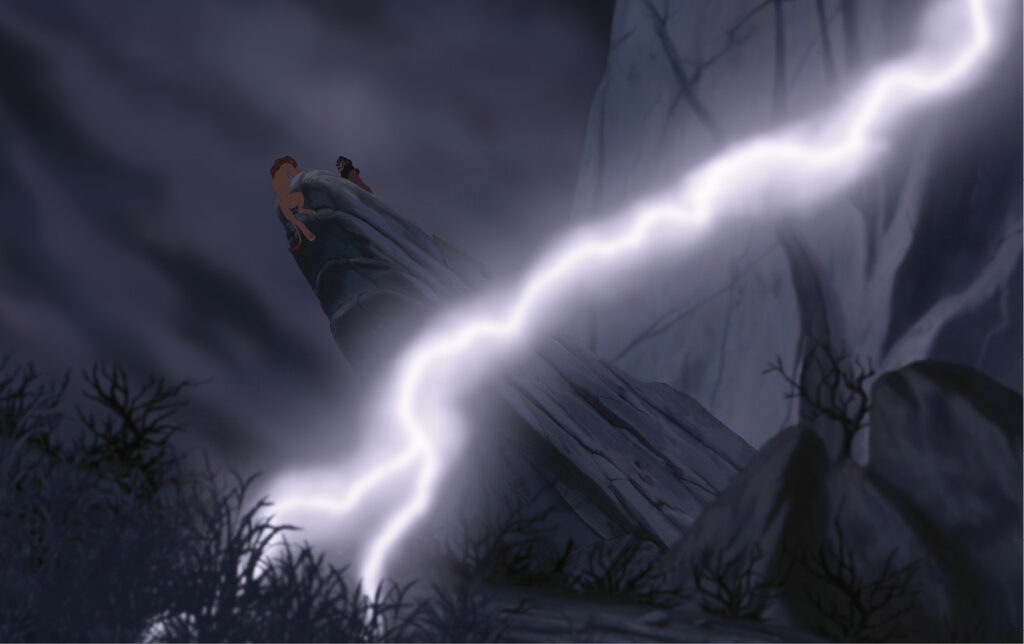

He also assisted with the effects for the final battle at Pride Rock, made challenging because many of the fire scenes were animated in slow motion. “We were [normally] doing 12 drawings per frame, but in slow motion you’re talking like 48 drawings,” he says.
Coming off Beauty and the Beast, where he was trained on the job, Lund also recalls the learning curve. “There is a lightning scene, and I remember it was the first time I’d actually had someone explain to me how it worked and how it doesn’t just zigzag down like you’d do in your spiral notebook,” he says. “I’m working on lightning [for a project] now, and I’m still doing it exactly the same way I learned on The Lion King.”
We were [normally] doing 12 drawings per frame, but in slow motion you’re talking like 48 drawings.—Marlon West
For both men, the most challenging things to animate were sometimes the least remarked on. “I think the hardest scene I did was at the beginning of Scar’s song,” says Lund. “He lands on the ground, and there are these cracks forming—so we had to animate a crack growing but then moving back in space, and it’s swimming all over the place.”
“[That song] ’Be Prepared’ had a lot of changing perspectives of rocks that were rolling and the camera panning up,” agrees West, “but the toughest scene for me personally—something that no one looks at and goes, ‘Boy, that looked cool!’—is in ‘Hakuna Matata’ where [the warthog] Pumbaa’s on a vine getting pulled up by Simba. He starts off straight on, and then as he goes up out of frame, the camera pans up. Because it’s hand-drawn flat paintings, the background has forced perspective. I remember that was really hard to do, but no one has ever looked at The Lion King like, ‘Damn those vines are killing it!’”
Made during that transitory time between traditional animation methods and CGI, The Lion King kept to the classic, painterly Disney style while taking advantage of new technology. “Back in the day, you could only get maybe 10 levels of acetate down on an animation stand before the background started to go out of focus because we were going through so much plastic,” recalls West, talking about hand-drawn animation cels. On The Lion King, with the shift to CGI, Effects Artists could do “level after level,” he says. “Twenty, 30, 50, 100 levels of effects in character animation. And they were also able to do a lot of backlit effects or blur them, make them transparent—all those things that gave our effects more believability than we had been doing prior to that.”

As for CGI’s most significant role in the film, audiences still remember the hundreds of wildebeests stampeding over the ridge. It was innovative not only for not shying away from death, but also because the sequence required cutting edge technology for the time to pull off all those animals while still keeping the hand-drawn look to them.
The concept was the brainchild of Woolverton, who stumbled across photos of the annual wildebeest migration while researching an original approach to Mufasa’s death. “I saw how frenetic and unstoppable the animals were,” she says. “I realized that we could ‘drown’ Mufasa in a river of wildebeests.” She pitched the idea to the team, and after a debate it was adopted into the story.
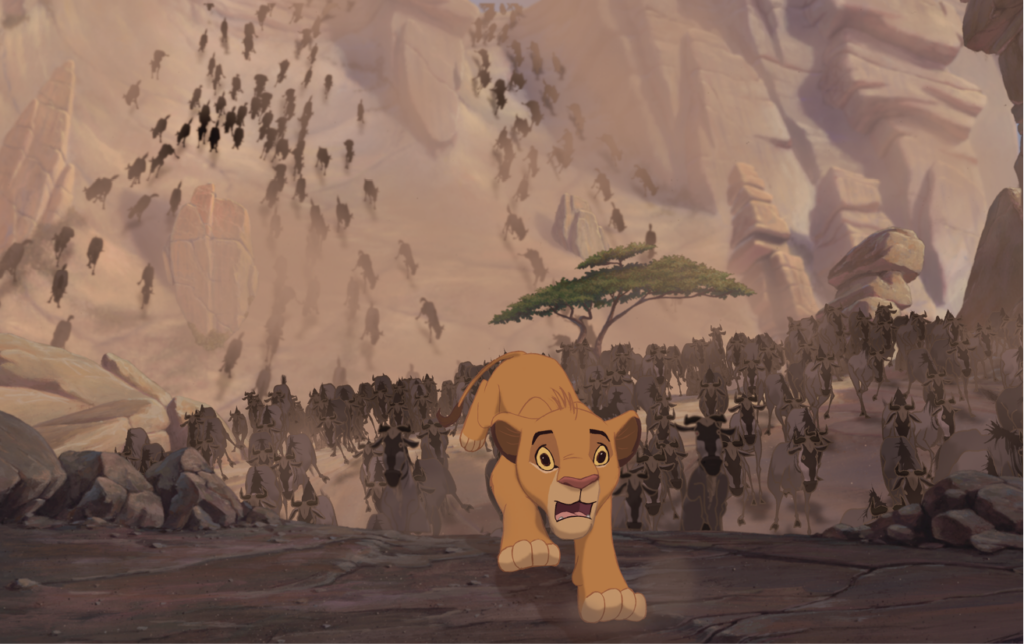
While Lund didn’t animate the wildebeests, he says: “I remember being very aware that the CG parts of that, even through layout, were allowing us to be more sophisticated filmmakers. Just the way the camera moves and is edited with the music: you hear that big, haunting choral note before they come over the ridge… It was exciting because we were showing angles that we’ve never shown before.”
“Emotionally, the film seemed to raise the stakes,” he adds. “It was a big deal to kill off a parent and show it… It’s a sophisticated story, but clean and simple, there’s not a lot of extra stuff, and so you connect with it emotionally. It kind of sends you through the wringer by the time you’re done. You’re just euphoric [because] what you’ve gone through is much more than you realize you’re going through while you’re watching it.”

